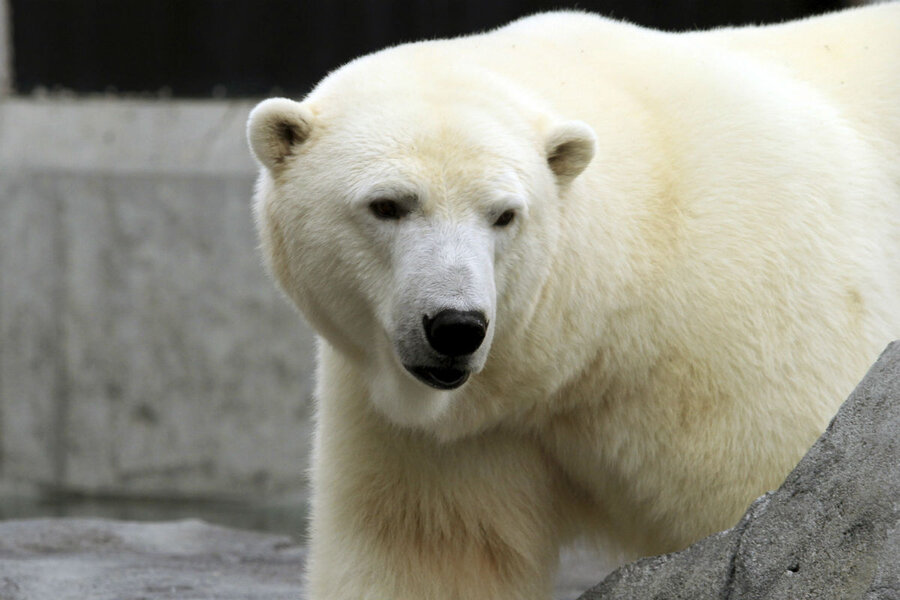How polar bears could survive climate change: US plan takes a hard look
Loading...
In the final days of the Obama administration, the US Fish and Wildlife service has released a plan to help keep polar bears from going the way of the dodo.
The report stresses that the No. 1 threat to polar bears is climate change, and that without significant action their chances of long term survival at current levels are low. Climate action does not fall under the purview of Fish and Wildlife, however, so they have proposed a number of stopgap measures that may give bear populations the best chance of surviving long enough to see a cooler Arctic.
Listed as a threatened species since 2008, polar bears depend on sea ice for hunting grounds, but because of the rapid pace of Arctic warming those grounds have been shrinking rapidly. Addressing this root problem is ultimately the best way to save the species, the report emphasizes, warning that, "Short of action that effectively addresses the primary cause of diminishing sea ice, it is unlikely that polar bears will be recovered."
When it comes to curbing emissions, however, Fish and Wildlife’s hands are tied. Rather, the new conservation plan focuses on "wildlife management actions within the United States that will contribute to the survival of polar bears in the interim so that they are in a position to recover once Arctic warming has been abated."
Those actions represent a multi-pronged approach aimed at keeping bear numbers as high as possible. Hungry bears unable to hunt are finding their way into human communities more and more often, looking for food. In response to this problem, simple steps can be taken, such as introducing bear-resistant food lockers or controlling where whale-bone piles form.
Other measures include greater international cooperation, as bears also roam in the northern parts of Canada and Russia, protection of denning areas, minimizing risk from oil spills, and managing local hunting. While President Nixon outlawed trophy hunting decades ago, the US permits Alaskan natives to take bears for subsistence. All told, putting these plans into action would reportedly cost about $13 million per year.
While combating climate change remains politically challenging, these concrete steps may prove less controversial, particularly since they take into account the views of "a wide range of affected people, including Alaska Natives who hunt polar bears and oil industry representatives whose companies operate in polar-bear habitat," as Yereth Rosen writes for Alaska Dispatch News.
But are such short term measures a credible path to progress? Some research suggests that bears may be more resilient than we often think. Robert F. Rockwell, a population biologist and ecologist with the American Museum of Natural History, believes that bears may be able to expand their diet to include new foods in addition to the usual seals, whales, and walruses.
"As climate change causes bears in the Hudson Bay region to spend more time on land, what are they doing? So far, the answer is they are opportunistically consuming land-based food, especially exploiting ever-increasing numbers of snow geese and caribou," Rockwell explains in an email to The Christian Science Monitor.
Other experts are skeptical that the bears can adjust to a changing habitat.
"A hungry polar bear isn't going to just lay down and die," Steven Amstrup, the chief scientist with Polar Bear International, told the Monitor in 2015, but "there doesn't appear to be enough food to support the entire polar bear population if sea ice completely melted."
Regardless of whether bears can learn to change their hunting habits, the Fish and Wildlife's plan is a step in the right direction, according to Rockwell.
"Minimizing human-bear conflict is certainly important. Protection needs to be given to their denning areas – including minimizing encroachment by humans," he says. "There is little doubt that an apex predator in a rapidly changing region deserves special protection."








